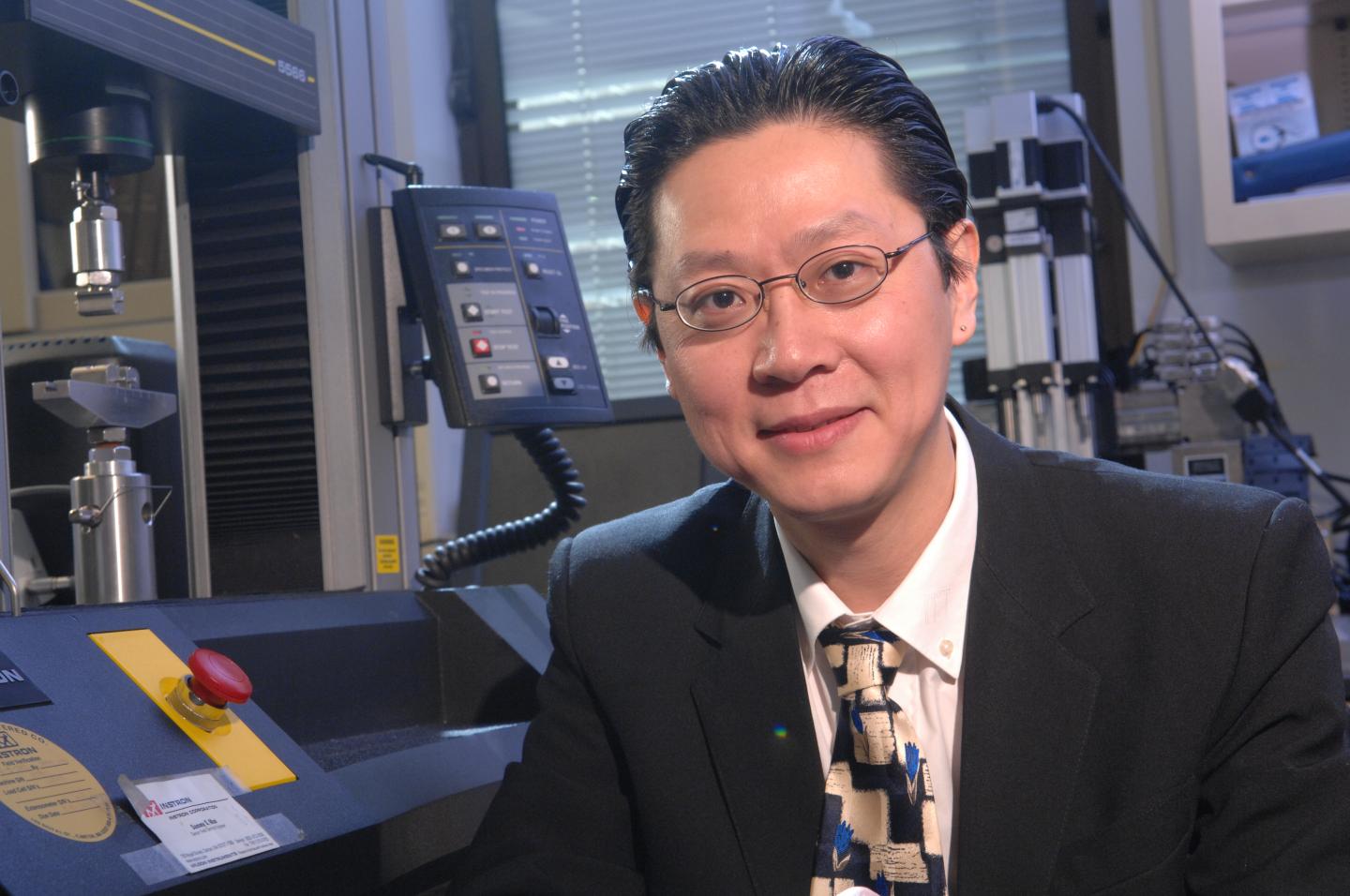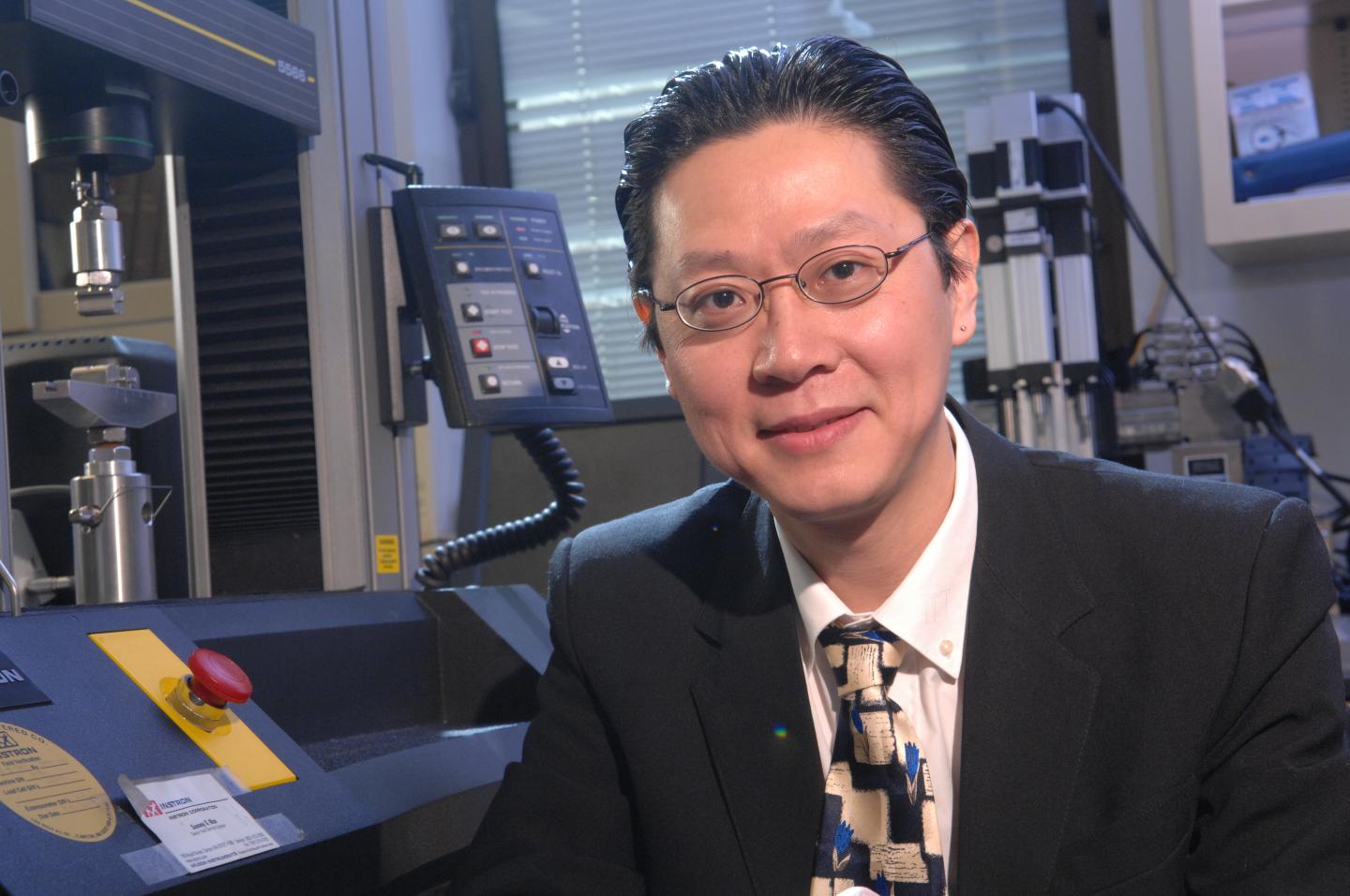
Credit: NYU College of Dentistry
New York University College of Dentistry (NYU Dentistry) researchers have received two R01 grants from the National Institute of Dental & Craniofacial Research, part of the National Institutes of Health, totaling nearly $3.7 million.
The grants will support research to develop improved materials for restorative dentistry that are both resilient and aesthetically pleasing. Yu Zhang, PhD, associate professor of biomaterials at NYU Dentistry, will lead the two projects.
According to the American College of Prosthodontists, 178 million people in the United States – or 55 percent of the population – are missing at least one tooth. This number is expected to grow due to an aging population.
"Teeth play a critically important role in our lives, and their loss has both health and social implications. While function and aesthetics can be restored with dental crowns and fixed dental prostheses, there are still limitations on the materials used in terms of their durability and how natural they look," said Zhang.
One of the five-year grants (1R01DE026772), which began May 1, 2017, will focus on the development of zirconia-based ceramics that are both strong and translucent. Both factors are important for ceramic restorative materials, as strength prevents damage like fracturing, while translucency helps materials to look more natural and enamel-like.
Unfortunately, these properties are often mutually exclusive in restorative materials. Porcelain-based and glass-ceramic materials have higher translucency but lower strength, and are thus susceptible to premature failure. Zirconia-based ceramics are stronger and tougher but have poor translucency.
Zhang's research using this $1.8 million grant will fill a critical need in helping to develop translucent and strong ceramics for better-performing restorative materials. The study will work toward creating aesthetic, strong, and abrasion-resistant materials by developing a new form of nanocrystalline yttria-stabilized tetragonal zirconia polycrystals using novel processing methodologies.
The research aims to extend clinical indications for zirconia to the aesthetic realm and has applications for minimally invasive treatments. Improved zirconia-based materials can preserve tooth structure and prolong the lifetime of dental prostheses and crowns, thus reducing money and time spent.
The second five-year grant (1R01DE026279), which began August 1, 2017, will focus on improving the fracture resistance of porcelain-veneered dental prostheses, including crowns and bridges.
Dental crowns and bridges are usually constructed by applying an aesthetic porcelain veneer, which makes it look more natural, to a strong core. Ceramic core materials, such as zirconia and lithium disilicate, are currently favored for their ease of fabrication and for their strength. While porcelain chipping and fractures are observed in all types of veneered dental prostheses, they are particularly prevalent in porcelain-veneered zirconia.
The high chipping and fracture rate of porcelain-veneered zirconia is due predominantly to residual stresses introduced by the high-temperature veneering process. However, researchers have lacked a comprehensive understanding of key material, design, and processing parameters that govern these residual stresses.
Zhang's research using this $1.8 million grant aims to fill in this knowledge gap and improve the fracture resistance of porcelain-veneered prostheses. He aims to do this through both reducing residual tensile stresses, in conjunction with designing a veneer/core interface that is continuously graded, rather than two separate layers.
Through developing a novel model to design continuously graded veneer/core interfaces, described as a viscoelastic graded finite element method, the research team can design the next generation of fracture-resistant porcelain-veneered ceramic prostheses. They will also use clinically relevant fracture mechanics test methods to validate their finite element model predictions.
"This research aims to advance the understanding of how stress profiles in all-ceramic prostheses can be tailored for better fracture resistance. Ultimately, such knowledge will bring us closer to a solution of a pervasive clinical problem — chipping, delamination, and fracture of porcelain-veneered prostheses — leading to reduced issues and cost of replacement," Zhang said.
###
About NYU College of Dentistry
Founded in 1865, New York University College of Dentistry (NYU Dentistry) is the third oldest and the largest dental school in the US, educating more than 8 percent of all dentists. NYU Dentistry has a significant global reach with a highly diverse student body. Visit http://dental.nyu.edu for more.
Media Contact
Rachel Harrison
[email protected]
212-998-6797
@nyuniversity
http://www.nyu.edu




